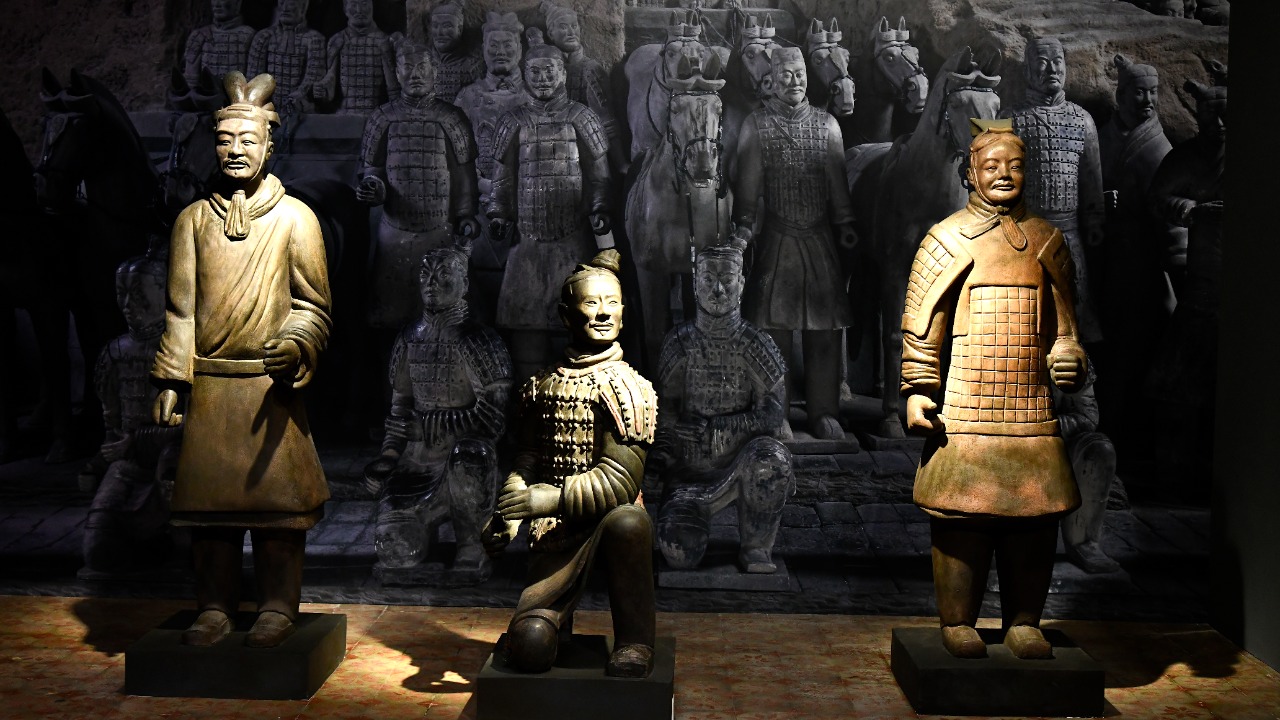
The tomb of Qin Shi Huang, China’s first emperor, remains a mystery to this day, despite the discovery of its adjacent Terracotta Army in 1974. Located near modern-day Xi’an in Shaanxi province, the tomb is believed to be filled with treasures and deadly traps. Archaeologists have refrained from opening the tomb due to fears of toxic mercury levels and potential booby traps that could be triggered upon entry.
Historical Background of Qin Shi Huang’s Reign
Qin Shi Huang is known for his significant role in unifying China in 221 BC, marking the beginning of the Qin dynasty. His reign brought about standardization across the seven warring states, including weights, measures, and script. However, Qin Shi Huang was also obsessed with immortality, leading him to embark on quests for elixirs involving mercury. This obsession also led to the mobilization of 700,000 laborers to construct his tomb starting around 246 BC.
The design of the tomb is said to be a microcosm of his empire, with palaces, rivers, and stars recreated inside using pearls and gold. This grandeur reflects the emperor’s desire to maintain his power and influence even in the afterlife.
Construction and Scale of the Mausoleum Complex
The tomb’s construction is a testament to the engineering prowess of the time. The central pyramid-like mound and underground chambers span 2.13 square kilometers, a project that took 38 years to complete. The labor force consisted of 720,000 workers, many of whom were conscripted from across the empire. The site’s location was chosen for its feng shui alignment with Mount Li.
Materials like bronze, jade, and lacquer were used in the construction, with the outer walls reinforced to withstand floods and invasions. This level of detail and scale underscores the importance of the tomb to Qin Shi Huang and the lengths he went to ensure its protection.
Discovery of the Terracotta Army
The Terracotta Army was accidentally discovered in 1974 by local farmers digging a well. Pit 1 revealed 6,000 terracotta warriors in battle formation, each uniquely sculpted with real weapons. Subsequent excavations of Pits 2 and 3 revealed 1,400 and 70 figures respectively, along with non-military pits containing acrobats, officials, and musicians, bringing the total to over 10,000 statues.
However, these discoveries also highlighted preservation challenges. Exposure to air led to oxidation and fragmentation of the figures, informing the cautious approach towards the main tomb.
Ancient Accounts of Traps and Hazards
Historical texts, such as Sima Qian’s “Records of the Grand Historian”, describe automated crossbows set to fire at intruders and a map of the heavens on the ceiling with pearls as stars. The tomb is also said to contain simulated rivers of mercury, designed to deter robbers. Craftsmen and concubines were reportedly buried alive to guard the tomb’s secrets.
Post-burial measures were also taken to protect the tomb, including flooding the site to erase traces of construction. These accounts have contributed to the hesitance to open the tomb, as the layout remains unknown.
Modern Scientific Evidence of Dangers
Modern technology has been used to assess the potential dangers of the tomb. LIDAR and ground-penetrating radar scans in the 2000s detected high-density chambers and a mercury concentration of 0.5 milligrams per cubic meter in the soil, far above WHO safety thresholds. Studies by the Emperor Qinshihuang’s Mausoleum Site Museum in 2020 confirmed vapor emissions consistent with cinnabar use in immortality elixirs, posing neurotoxic risks to excavators.
Soil core samples from the 2010s showed mercury plumes extending 1.5 kilometers, suggesting potential groundwater contamination if disturbed. These findings further justify the caution in opening the tomb.
Debates Among Archaeologists on Opening the Tomb
There is ongoing debate among archaeologists about whether to open the tomb. Yuan Zhongyi, former lead archaeologist, stated in 2000, “We have the technology but not the courage,” citing irreversible damage risks similar to Tutankhamun’s curse. Some researchers from the Chinese Academy of Sciences advocate for non-invasive technology like muon tomography before entry, while others call for UNESCO-guided excavation.
There are also ethical concerns to consider, including cultural heritage laws prohibiting disturbance without national approval. These considerations must be balanced against scientific curiosity about Qin Shi Huang’s sarcophagus and the potential knowledge to be gained.
Potential Implications of Future Excavation
If the tomb were to be opened, preservation strategies would need to be implemented, such as hermetic seals and robotic probes. These methods have been successfully used in partial digs in the outer pits since 1979. Potential discoveries could include the emperor’s intact body, rumored to be preserved in mercury, and artifacts revealing Qin dynasty rituals.
The global impacts of such an excavation could be significant, including a boost in tourism for Xi’an’s site museum, which already attracts 8 million visitors yearly. However, health protocols would need to be put in place to mitigate toxin exposure, ensuring the safety of all involved.